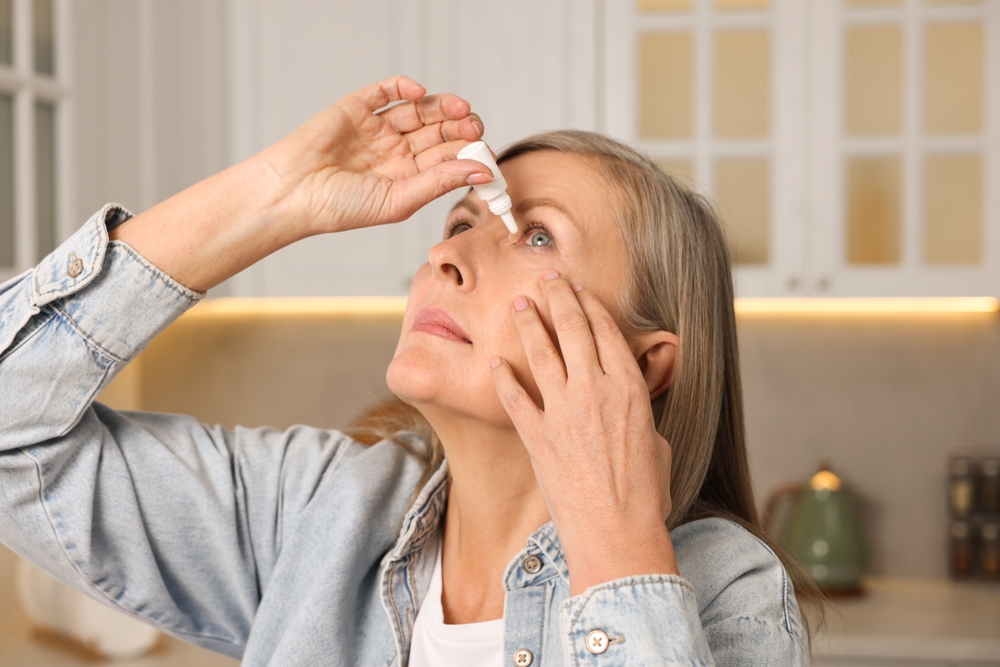What Are the Side Effects of Glaucoma Eye Drops?
Prescription eye drops are often the first line of treatment for glaucoma, a serious eye condition that can lead to permanent vision damage. While these medications can be effective at lowering intraocular pressure, patients frequently experience frustrating side effects, including redness and irritation.
Keep reading to learn more about the side effects of glaucoma eye drops and alternative procedures that can reduce your reliance on these prescription medications.
How Do Glaucoma Eye Drops Work?
The goal of prescription eye drops for glaucoma is to lower intraocular pressure, thereby preventing damage to your vision. Glaucoma is a condition in which fluid does not leave the eye at the rate it should, leading to an increase in intraocular pressure.
This eventually damages the optic nerve, the part of your eye responsible for sending images to the brain. Damage to the optic nerve is irreversible and can lead to permanent blindness.
However, glaucoma eye drops can help maintain healthy eye pressure and slow or stop damage from occurring. They do this in different ways, depending on the type of eye drop you are using:
Prostaglandin Analogs
Prostaglandin analogs are a type of glaucoma medication that reduces intraocular pressure by improving the flow of fluid from your eye. Common medications include:
- Latanoprost
- Bimatoprost
- Travoprost
- Tafluprost
- Latanoprostene bunod
Rho Khinase Inhibitors
Rho khinase inhibitors, like netarsudil, are a newer type of glaucoma medication that also lowers intraocular pressure by improving fluid drainage.
Beta Blockers
Beta blockers lower eye pressure by decreasing the production of fluid in the eye. Timolol is a common form of beta blocker prescribed to glaucoma patients.
Carbonic Anhydrase Inhibitors
Carbonic anhydrase inhibitors (CAIs), similar to beta blockers, also decrease the production of fluid in the eye. Common CAIs include dorzolamide and brinzolamide.
Alpha Agonists
Alpha agonists, such as Alphagan P, simultaneously decrease aqueous humor production while increasing fluid outflow from the eye.
Depending on the type and severity of your glaucoma, your eye doctor may recommend one or more of these medications to help you maintain a healthy eye pressure.
Do Glaucoma Eye Drops Cause Side Effects?
Although glaucoma eye drops are great for reducing eye pressure, they sometimes come with side effects that differ depending on the type, such as:
- Irritation
- Redness
- Eye color change
- Eyelash growth
- Stinging
- Drooping eyelids (ptosis)
- Fatigue
- Darkening of eyelid skin
- Corneal deposits
- Shortness of breath
- Headache
- Drowsiness
- Low blood pressure
- Reduced pulse rate
- Sunken eyes
- Dry mouth and nose
If you are experiencing any of these side effects while using glaucoma eye drops, your eye doctor may recommend switching to a different medication or exploring other treatment options that can help reduce or eliminate your need for glaucoma drops.
Alternatives to Glaucoma Eye Drops
Glaucoma procedures are often recommended to patients whose condition isn’t responding to eye drops, those who want to avoid side effects, or those who cannot adhere to the strict application schedule that comes with glaucoma drops. These procedures can provide long-term maintenance of healthy intraocular pressure and reduce your reliance on prescription glaucoma medications by changing the structure of the eye or implanting a drainage device to improve fluid flow.
Minimally invasive procedures such as iStent, selective laser trabeculoplasty (SLT), and laser peripheral iridotomy (LPI) can help lower your intraocular pressure through quick, precise techniques that minimize recovery time and side effects. For more advanced cases of glaucoma, Mid Ohio Eye also offers aqueous shunt surgery and trabeculectomy.
Have you been diagnosed with glaucoma and want to learn more about the treatment options available to you? Schedule an appointment at Mid Ohio Eye in Columbus, OH, today!










